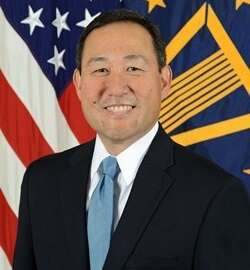
DoD needs to use a scalpel if it cuts medical force, medical corps educator says
DoD needs to be careful if it decides to cut 17,000 medical jobs.
Best listening experience is on Chrome, Firefox or Safari. Subscribe to Federal Drive’s daily audio interviews on Apple Podcasts or PodcastOne.
As the military changes its needs to focus on near-peer competition, the Pentagon needs to be careful about how it readjusts the size of its medical corps.
Richard Thomas, president of the Uniformed Services University — a federally-funded school that trains medical and nursing students for military service — says the Defense Department can’t readjust its medical personnel with a “sledgehammer or a meat cleaver,” but rather must take a scalpel to the corps.
Thomas’ comments come as multiple outlets reported that DoD is considering cutting its medical corps by as much as 17,000 people. The plan is to convert those billets into combat-ready service members to make the force more lethal.
Thomas told Federal News Network that DoD sent the services targets for how much they should cut their medical staff and the services are now calculating if those cuts are possible. The current active duty, reserve and guard medical corps has about 186,000 staff.
“This is really not unusual,” Thomas said. “At the end of every cycle of heightened operations or combat operations we tend to have a right sizing of the force and that’s what’s going on here. The military is saying ‘OK, let’s look at what you have grown in the medical community. What do you need, what’s your requirement and then we will adjust accordingly.’”
Thomas said one thing is different about the way the military reassesses its medical corps as it distances itself from the Middle East and focuses more toward Russia and China. That difference is the Defense Health Agency — the umbrella medical organization formed in 2013 that will take many medical responsibilities from the services.
“It’s not just the services on their own doing the assessment,” Thomas said. “One of the main functions of DHA is to help to coalesce, so you are looking at things from an enterprise perspective and not from as separate service perspective.”
Still, DoD relies on the services’ ability to tell the Pentagon what they need.
“What is the medical capability we want to be able to project around the globe to support our forces in austere environments?” Thomas said. “The services have the responsibility of defining that requirement to meet that capability requirement.”
Assessing the size of the medical force may be more contentious than it seems, however.
A Feb. 21 Government Accountability Office report found DoD does not have a uniform way of deciding how much medical staff it needs, and therefore cannot properly determine the right size of the medical force.
“Until DOD establishes joint planning assumptions for developing medical and dental personnel requirements, including a definition, and a method to assess options for achieving joint efficiencies, DoD will not know whether it has the optimal requirements to achieve its missions,” the report said.
The military departments have applied separate and different processes and assumptions to decide how many medical staff are needed.
The report goes on to state that DoD plans to develop a uniform metric for 72 medical specialties to deal with the issue, but those metrics are not in place and could be expensive to implement. DoD has yet to fully budget for the implementation of the metrics, but GAO says they are essential.
“Until DoD determines the critical wartime medical specialties to apply its clinical readiness metric and estimates the costs and benefits of applying the metric to each, it will not know if its implementation is being targeted to the areas of greatest return on investment,” the report said.
DoD agreed with six recommendations set out by GAO it rectify the issue. The recommendations include applying joint planning assumptions and methods when determining the size of the medical force and estimating the cost and benefits of using the DoD metrics to decide if the approach should be revised.
Copyright © 2025 Federal News Network. All rights reserved. This website is not intended for users located within the European Economic Area.
Scott Maucione is a defense reporter for Federal News Network and reports on human capital, workforce and the Defense Department at-large.
Follow @smaucioneWFED





